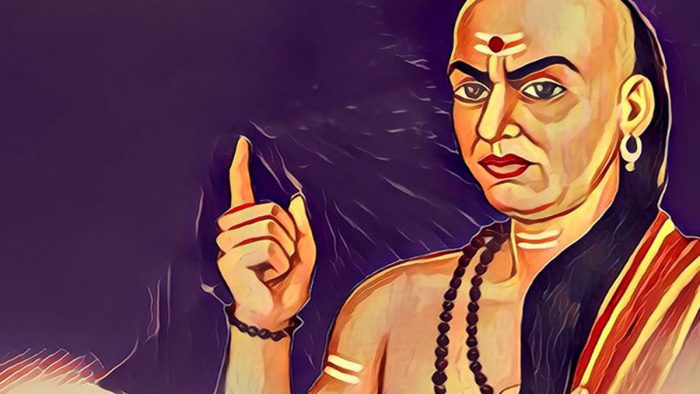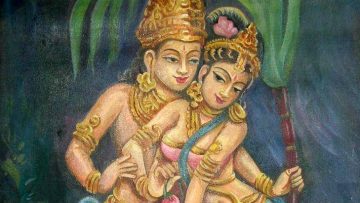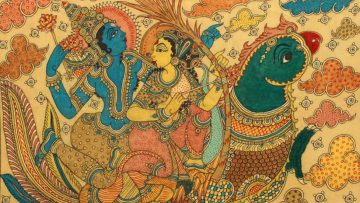Introduction
Indian society is composed of four वर्ण – ब्राह्मण, क्षत्रिय, वैश्य, and शूद्र. Life span is distributed among four आश्रम (Stages of Life) – ब्रह्मचर्य, गृहस्थ, वानप्रस्थ, and सन्न्यास. These two – वर्ण and आश्रम – forms the backbone of Indian society.
Over the centuries, society wrapped in वर्ण and आश्रम has nurtured core values of this earliest civilization of the world. Intricate yet beautiful Indian culture, mesmerizing the world since antiquity, is a gift of वर्णाश्रम.
स्वधर्म is a Sanskrit non-translatable word. Just to understand, this word has two parts – स्व and धर्म. Again, धर्म is a non-translatable Sanskrit word while स्व can be translated as “Self” but here it is “specific/definite”. धर्म has multiple meanings with respect to the context.
In this article, the meaning of the word धर्म is limited to “Duty or Responsibility”. So, the meaning of स्वधर्म, in this article, can be understood as “specific/definite duty/responsibility”.
The scope of this article is to depict and elaborate स्वधर्म of these four वर्ण and four आश्रम depicted by Kautilya in Arthashastra. The article also covers the role of the king in protecting and managing स्वधर्म in his kingdom.
त्रयी and स्वधर्म
Arthashastra is part of the umbrella of Dharmashastra texts. Primary texts coming under Dharmashastra are – Veda and entire Vedic literature (shruti), Smriti texts, Dharmasutra texts, Arthashastra texts, and Kamasutra. Many texts written on these subjects over centuries along with digests written in pre-modern and modern eras are also part of Dharmashastra.
In all of the above texts, the root of धर्म is common which is Veda. In Arthashastra also, Kautilya proclaims Veda as the root of धर्म. He uses the word त्रयी (Three Vedas – Rigveda, Yajurveda, and Samaveda) [1], as a collection of these Vedas.
In the next aphorism, he placed Atharvaveda and इतिहास in the same category and thus concludes that these four Vedas along with इतिहास are primary sources of knowledge [2].
Definition of इतिहास is also clearly given – पुराण, रामायण and महाभारत, Accounts of great personalities, Dharmashastra and Arthashastra are collectively called इतिहास [3].
Kautilya further elaborates on sources of knowledge by including six limbs of Vedas (वेदाङ्ग) – शिक्षा (Phonetics), कल्प (Ritual), व्याकरण (Grammar), निरुक्त (Etymology), छन्द (Prosody) and ज्योतिष (Astronomy) [4].
Understanding these six limbs are prerequisites to understand Veda (Highest knowledge).
After elaborating sources of knowledge, Kautilya stresses on त्रयीधर्म (Responsibility/Duty laid down by त्रयी). He considers त्रयीधर्म as the base of स्वधर्म. The reason given is – त्रयीधर्म not only establishes स्वधर्म but also keeps it steady [5].
स्वधर्म of ब्राह्मण
The first स्वधर्म Kautilya lists are of a ब्राह्मण [6]. Following are the specific duties/responsibilities
- अध्ययनम् (Studying)
- अध्यापनम् (Teaching)
- Doing यज्ञ for self and for others
- Giving and receiving दान (Donation)
First, two duties/responsibilities are related to the education sector covering teachers, coaches, and other such professionals. This group of people was responsible for providing education from grass root level to the highest level.
They were teaching what they studied and they studied what they were been taught. This traditional system was the backbone of the education sector in Kautilya’s era. Kautilya himself was the product of such a robust education system.
Doing यज्ञ was a primary duty of पुरोहित and other skilled ब्राह्मण. यज्ञ was organized by the merchant class and Kings – वैश्य, शूद्र, and क्षत्रिय for the welfare of self and society.
Their life was completely dependent on this activity as they were dedicated to this job throughout their life. They were carrying the legacy of त्रयी.
Receiving दान was not equal to receiving भिक्षा. It was given to ब्राह्मण, imparting knowledge, and to पुरोहित, keeping the tradition of त्रयी alive. There were no strict rules but starting from the token amount to anything like giving a geographical unit was in the range of such donation.
Charging fees for these duties was prohibited for a ब्राह्मण. Giving a donation to educational units by kings and merchants were very common. We found evidence of such donations in many inscriptions too.
ब्राह्मण was also doing a donation. Most probably राजपुरोहित (Royal पुरोहित) and another well to do पुरोहित were in such a position. Other ब्राह्मण in the royal court were also in such a league who were receiving a good salary and other wealth.
These ब्राह्मण were skilled in various fields and many times guiding the kings and other royal officers in warfare, administration, etc.
स्वधर्म of क्षत्रिय
Following are the main responsibilities of a क्षत्रिय [7] –
- अध्ययनम् (Studying)
- Doing यज्ञ for self
- Giving दान
- Living by the profession of arms (शस्त्रोपजीवी)
- भूतरक्षणम् (Protection of all beings)
For a क्षत्रिय, art of war, weapons, politics, administration and many other learnings of cultural and civilizational aspects from a qualified ब्राह्मण was the first duty. He was also getting learning from elders and experienced people of his family.
Such a learning base was making him wiser to understand and execute the other two duties – doing यज्ञ and giving दान. Thus, giving respect/donation to ब्राह्मण was quite natural in warrior class.
The profession of arms and living life as a warrior were prime duties of a क्षत्रिय. The defense unit of the king was made up of such skilled warriors. Making weapons, Knowledge of metallurgy and chemicals, upkeep of arms, training camps, etc. were part of their profession.
This way, a big weapon & metallurgy industry was thriving in every state. This industry was responsible for giving employment in society.
Protecting subjects of his own state was the prime duty of every king. Be it people, animals, and birds, flowers, land, and land produce, pathways, waterways, forts, shelters, spy network, environment, etc.
Kautilya has discussed how to manage and protect all of them, in detail, in many chapters. Thus, क्षत्रिय had a very important role to play in वर्णव्यवस्था by remain focused on his स्वधर्म.
स्वधर्म of वैश्य
Listed responsibilities of a वैश्य are [8] –
- अध्ययनम् (Studying)
- Doing यज्ञ for self
- Giving दान
- कृषि (Agriculture) and पशुपालन (Cattle Rearing)
- वाणिज्यम् (Trade)
Just like a क्षत्रिय, वैश्य also had the responsibility of study and sustaining the tradition of त्रयी. The first three duties listed above are a reflection of the same.
Agriculture, cattle rearing, and trade were the backbone of the economy of the state. Without the land (भूमि), none of these can thrive. The land also consists of waterways, forests, desert (if any), etc.. While the warrior class was responsible for end-to-end management of these resources, the merchant class was responsible for producing end products and their supply everywhere.
While the scope of Agriculture and cattle rearing were limited to the state, trade was boundaryless. Kautilya has mentioned industries like shipping, forest, fabric, and many others where merchants were supposed to travel to various other countries and geographies for trading.
Merchants were responsible for the circulation of money in society. This money was an important factor in sustaining त्रयी. The same त्रयी then making them fit to do their duties.
स्वधर्म of शूद्र
Responsibilities of a शूद्र are [9] –
- द्विजातिशुश्रूषा (Desire to learn from ब्राह्मण, क्षत्रिय, वैश्य)
- वार्त्ता (Economics)
- कारुकुशीलवकर्म (Professions related to performing/non-performing arts)
Study of Vedas is not advised for a शूद्र but at the same time, they are advised to grasp knowledge from the other three classes. If you don’t have to study but still have to grasp the required knowledge and wisdom then it is only possible by serving.
This is why service (सेवा) is indirectly advised for a शूद्र in Dharmashastra texts. To do सेवा, श्रद्धा in त्रयी is required. So, with श्रद्धा only, a शूद्र can get knowledge.
The scope of this service was very large – from sanitation to assisting other वर्ण. Generally, the capability was a key factor in deciding where one fit.
Acquisition of knowledge was dependent on whom a शूद्र is serving, for how long, and in which capacity. Accumulated knowledge over the years got converted into wisdom. Since serving to ब्राह्मण and क्षत्रिय doesn’t mean a शूद्र can perform their duties on their behalf but over the years, a wise शूद्र can attain a significant place in the society. taking part in वार्त्ता (Economics) [10] is allowed for them. It includes agriculture, cattle rearing, and trade.
Over the years, a wise शूद्र can attain a good place among the merchant class and can also make considerable wealth. Wise शूद्र had a place even in the मन्त्रीमण्डल (Ministry).
Every शूद्र was not into सेवा. Desire to learn could lead a शूद्र towards preforming/nonperforming arts too. नाट्यशास्त्र of भरतमुनि deals in this subject in detail where a शूद्र had many ways to earn a livelihood.
Painting, Sculpting, Drawing, Music, Singing, Dancing, Acting, and many uncategorized skills were part of it. Based on the skill and expertise, a शूद्र had a chance to earn beyond even traditional limits.
Construction Industry (Temples, Wells, Royal palaces, Gardens, Town construction, etc.), Art academies and related jobs, Farming, Cattle rearing, trade, etc. and many such sectors were driven and controlled by शूद्र. Along with वैश्य, they were responsible for creating, managing, and sustaining the economy of the state.
After mentioning specific duties of four वर्ण – ब्राह्मण, क्षत्रिय, वैश्य and शूद्र, Kautilya has mentioned specific duties of people living life under four आश्रम (Stages of Life) – ब्रह्मचर्य, गृहस्थ, वानप्रस्थ, and सन्न्यास.
स्वधर्म of ब्रह्मचारी
The very first आश्रम is ब्रह्मचर्याश्रम where a person is called ब्रह्मचारी (Student of Vedas) and has specific duties [11] –
- अध्ययनम् (Study)
- Work-related to the sacred fire
- भैक्षव्रतम् (Living on alms)
- Training under a proper गुरु or with his son and student like him until he completes his time period as a ब्रह्मचारी.
This आश्रम was for ब्राह्मण, क्षत्रिय and वैश्य. The study was a paramount duty in this first stage of life so that these three can uphold त्रयी in the future. Acquiring knowledge from a proper गुरु is also advised. Serving such गुरु and obeying the rules laid down by him were final words in the student life.
This training was necessary for making students humble and grounded. Control of senses was in the foundation of this training. This training was also necessary as these three had to impart the respective knowledge to others including शूद्र.
The prime goal of this आश्रम is to achieve the first पुरुषार्थ – धर्म.
स्वधर्म of गृहस्थ
गृहस्थाश्रम is the second आश्रम. Duties of a गृहस्थ [12] (Householder) are –
- Earning and living as per prescribed duties
- Marrying into the same वर्ण but not in the same गोत्र
- Have children (ऋतुगामी)
- Respect and worship of gods and ancestor
- Taking food only after offering to gods, ancestors, and dependents
Earning, marriage, and having children are main duties but with riders. Earning must be based on the prescribed duties of वर्ण. Mixing of duties is not allowed. Marriage in the same गोत्र and in different वर्ण are not allowed.
Having children doesn’t mean unlimited and untimed union with the wife. The union must be as per the prescribed duration and with the consent of the better half as per her health and other factors.
Kautilya has given reason for the first three duties [13] – Observance of स्वधर्म leads to स्वर्ग but transgression in it leads to साङ्कर्य (Mixing up of वर्ण and स्वधर्म). The message is clear and loud – Transgression in स्वधर्म doesn’t lead to स्वर्ग.
The same message we have in भगवद्गीता [14] where Bhagwan Krishna says – Even if other’s धर्म is better and that of self looks inferior but still one should follow own स्वधर्म. निधन (Death) while practicing स्वधर्म is always good but practicing other’s धर्म leads you to danger. Ultimately the person does not attain स्वर्ग.
Regarding वर्णसाङ्कर्य, we find same kind of message again from भगवद्गीता [15] from Arjun that not following धर्म leads to degradation in women and such women give birth to impure progeny (वर्णसङ्कर).
Arjun further states that such progeny leads everybody (Including ancestors) to नरक and ultimately कुलधर्म and जातिधर्म become insignificant in the society. Such people attain नरक [16]. It is evident that the message of भगवद्गीता and Kautilya are one and same.
The prime goal of this आश्रम is to achieve the other two पुरुषार्थ – अर्थ and काम.
स्वधर्म of वानप्रस्थ
वानप्रस्थाश्रम is the third आश्रम. Duties of a वानप्रस्थ [17] (Forest Dweller) are –
- ब्रह्मचर्यम् (Detachment)
- Sleeping on ground
- Wearing matted locks and antelope-skin
- Work-related to the sacred fire
- Respect and worship of gods and ancestor
- Taking forest products as food
During this आश्रम, a person is destined to start detaching him/her from all unnecessary attachments and prepare for the next phase of life.
This आश्रम prepares a person to accept basic realities like – Worldly pleasures and attachments are time being in life.
Timely exit from them are good for self and others. Controlling desires is the first step. The second is control of bodily pleasures and the third is control of the tongue (Food habits). ब्राह्मण and क्षत्रिय were expected to follow this phase.
The prime goal of this आश्रम is to get the person prepared to detach from the desires once he fulfills two पुरुषार्थ – अर्थ and काम.
स्वधर्म of परिव्राजक
In the last phase of life, a person is expected to live life as a परिव्राजक (Wondering Ascetic). Main duties are [18] –
- संयतइन्द्रियत्त्वम् (Control on Senses)
- अनारम्भम् (No active life)
- निष्किञ्चनत्त्वम् (No possession of any worldly stuff)
- सङ्गत्यागः (Complete detachment from all)
- भैक्षव्रतम् (Living life on alms)
- अरण्यवासः (Living in the forest)
- शौचम् (External and internal cleanliness)
Certainly, these duties are the toughest among all and can test the temperament of the person. It is as good as living life as if you are not present in this world. During this phase, a person realizes that he/she is a very small part of this universe.
This phase makes the person स्थितप्रज्ञ (Whose divine intellect is steady). In भगवद्गीता [19], in 18 verses, Bhagwan Krishna explains beautifully this term, characteristics, actions, and benefits of being स्थितप्रज्ञ. One can refer to these verses in connection with the duties of a परिव्राजक to understand how this helps to achieve the final goal of life – मोक्ष.
सामान्यधर्म for all वर्ण
Apart from स्वधर्म, Kautilya has also provided a general guideline in form of सामान्यधर्म for every individual. They are [20] –
- अहिंसा (Nonviolence)
- सत्यम् (Truth)
- शौचम् (Cleanliness)
- अनसूया (Freedom from malice)
- अनृशंस्यम् (Compassion)
- क्षमा (Forgiveness)
It is to be noted that this general guideline has three layers – मानसिक, वाचिक, कायिक (Mind, Speech, Physical). Every individual has to exercise above six सामान्यधर्म in all these three layers throughout life.
It is also to be noted that these six acts are to be done in accordance with स्वधर्म of own वर्ण. Various Dharmashastra texts have explained these six terms in detail.
One Sanskrit verse will give an idea of how this सामान्यधर्म differs and should be understood/applied with respect to स्वधर्म of own वर्ण only –
क्षमा शत्रौ च मित्रे च यतीनामेव भूषणम् |
अपराधिषु खलेषु नृपाणां सैव दूषणम् ||
It says – क्षमा to all human being is a natural act and a virtue for an ascetic as his final goal is to attain मोक्ष and he is extolled for the same.
For the king, this is not advisable especially while treating terrorists/ criminals as the king has to ensure law and order in his state. So, giving क्षमा is not a virtue for the king.
Role of The King
Kautilya has just not laid down duties/responsibilities but also ensured that it gets implemented properly. He has also ensured that a constant monitoring process must be established for the same. He has assigned this responsibility to the king who has the highest place in society.
He has ordered the king to ensure two things [21] –
- Duties of वर्ण shouldn’t get mixed or violated.
- All four वर्ण should adhere to their respective duties properly.
Such a king finds joy not only during his tenure but also afterward. He is extolled while living as well as after his death. This way, the king’s role becomes paramount in sustaining स्वधर्म and in turn also त्रयी.
To ensure these two, Kautilya has advised the king to use दण्डनीति [22]. By applying दण्डनीति, the king can achieve four stages of त्रयी –
- अलब्धस्य लाभः (Establishment)
- लब्धस्य परिरक्षणम् (Protection)
- रक्षितस्य विवर्धनम् (Sustenance)
- वृद्धस्य प्रतिपादनम् (Accomplishment)
दण्डनीति being a two-edged sword, Kautilya has warned the king to use it wisely. Kautilya has said that such a wise king is worshipped by his people [23].
The same advice to the king is also given by Manu [24]. He has warned the king that improper implementation of दण्डनीति can make even वानप्रस्थ and परिव्राजक angry and disturbed then one can only imagine the frustration of गृहस्थ. So, the improper implementation of दण्डनीति can lead to the downfall of the entire society.
Proper implementation of दण्डनीति can make the king’s task easy and people get accustomed automatically. It helps the king in managing धर्म, अर्थ, काम in his state [25].
Conclusion
There are two takeaways. One is for the king and the other is for people. King is the implementor, protector, and manager of the entire system while the people are the follower.
For obedient people, Kautilya says –
व्यवस्थितार्यमर्यादः कृतवर्णाश्रमस्थितिः |
त्रय्या हि रक्षितो लोकः प्रसीदति न सीदति ||
[People in this वर्णाश्रम, a noble fold, and protected by त्रयी, always prosper and never perish.
(KAS 1.3.17)]
For an able and wise king, Kautilya says –
चतुर्वर्णाश्रमो लोको राज्ञा दण्डेन पालितः |
स्वधर्मकर्माभिरतो वर्तते स्वेषु वेश्मसु ||
[Nurtured by a proper दण्डनीति from the king, four वर्णाश्रम and people remain deeply attached.
(KAS 1.4.16)]
References
- सामर्ग्यजुर्वेदास्त्रयस्त्रयी (KAS 1.3.1)
- अथर्ववेदेतिहासवेदौ च वेदाः (KAS 1.3.2)
- पुराणमितिवृत्तमाख्यायिकोदाहरणं धर्मशास्त्रमर्थशास्त्रं चेतीतिहासः (KAS 1.5.14)
- शिक्षा कल्पो व्याकरणं निरुक्तं छन्दोविचितिर्ज्योतिषमिति चाङ्गानि (KAS 1.3.3)
- एष त्रयीधर्मश्चतुर्णां वर्णानामाश्रमाणां च स्वधर्मस्थापनादौपकारिकः (KAS 1.3.4)
- स्वधर्मो ब्राह्मणस्याध्ययनमध्यापनं यजनं याजनं दानं प्रतिग्रहश्च (KAS 1.3.5)
- क्षत्रियस्याध्ययनं यजनं दानं शस्त्राजीवो भूतरक्षणं च (KAS 1.3.6)
- वैश्यस्याध्ययनं यजनं दानं कृषिपाशुपाल्ये वणिज्या च (KAS 1.3.7)
- शूद्रस्य द्विजातिशुश्रूषा वार्त्ता कारुकुशीलवकर्म च (KAS 1.3.8)
- कृषिपाशुपाल्ये वणिज्या च वार्त्ता (KAS 1.4.1)
- ब्रह्मचारिणः स्वाध्यायोऽग्निकार्याभिषेकौ भैक्षव्रतत्वमाचार्ये प्राणान्तिकी वृत्तिस्तदभावे गुरुपुत्रे सब्रह्मचारीणि वा (KAS 1.3.10)
- गृहस्थस्य स्वकर्माजीवस्तुल्यैरसमानर्षिभिर्वैवाह्यमृतुगामित्वं देवपित्रतिथिभृत्येषु त्यागः शेषभोजनं च (KAS 1.3.9)
- स्वधर्मः स्वर्गायानन्ताय च (KAS 1.3.14), तस्यातिक्रमे लोकः सङ्करादुच्छिद्येत (KAS 1.3.15)
- श्रेयान् स्वधर्मो विगुणः परधर्मात्स्वनुष्ठितात् | स्वधर्मे निधनं श्रेयः परधर्मो भयावहः || (BG 3.35)
- अधर्माभिभवात्कृष्ण प्रदुष्यन्ति कुलस्त्रियः | स्त्रीषु दुष्टासु वार्ष्णेय जायते वर्णसङ्करः || (BG 1.41)
- BG 1.42-44
- वानप्रस्थस्य ब्रह्मचर्यं भूमौ शय्या जटाऽजिनधारणमग्निहोत्राभिषेकौ देवतापित्रतिथिपूजा वन्यश्चाहारः (KAS 1.3.11)
- परिव्राजकस्य संयतेन्द्रियत्वमनारम्भो निष्किञ्चनत्त्वं सङ्गत्यागो भैक्षव्रतमनेकत्रारण्ये च वासो बाह्याभ्यन्तरं च शौचम् (KAS 1.3.12)
- BG 2.54-72
- सर्वेषामहिंसा सत्यं शौचमनसूयाऽऽनृशंस्यं क्षमा च (KAS 1.3.13)
- तस्मात्स्वधर्मं भूतानां राजा न व्यभिचारयेत् | स्वधर्मं संदधानो हि प्रेत्य चेह च नन्दति || (KAS 1.3.16)
- आन्वीक्षिकीत्रयीवार्त्तानां योगक्षेमसाधनो दण्डः, तस्य नीतिर्दण्डनीतिः (KAS 1.4.3)
- यथार्हदण्डः पूज्यः (KAS 1.4.10)
- तीक्ष्णश्चैव मृदुश्च स्यात् कार्यं वीक्ष्य महीपतिः | तीक्ष्णश्चैव मृदुश्चैव राज भवति सम्मतः || (MS 7.140)
- सुविज्ञातप्रणीतो हि दण्डः प्रजा धर्मार्थकामैर्योजयति (KAS 1.4.11)
Disclaimer: The opinions expressed in this article belong to the author. Indic Today is neither responsible nor liable for the accuracy, completeness, suitability, or validity of any information in the article.









